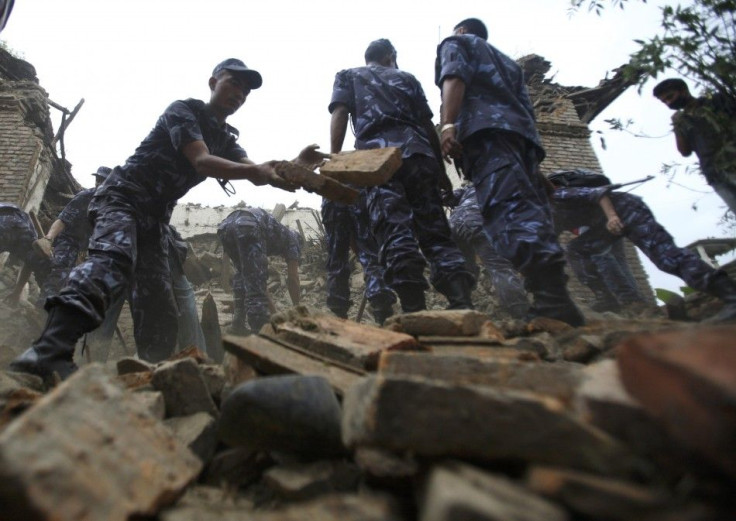India Earthquake: Rescuers Push into Isolated Towns
Meanwhile, the Death Toll Exceeds 90

Six thousand troops have been deployed to the India-Nepal border, where a 6.9 magnitude earthquake hit Sunday night.
The current death toll has risen to 90 people, about 50 from the Indian state of Sikkim, along with others in Nepal and Tibet.
Most of the damage on Sunday night and Monday morning was the result of violent landslides, which not only destroyed homes but also blocked rescuers from many of the small communities of Sikkim, including the towns of Mangan and Singhtam, which were almost totally demolished. About 200 soldiers and rescuers are currently working their way into the villages.
Sikkim is India's least populated state, and the landlocked mountainous area is home to roughly 500,000 people. The small population is beneficial because it minimizes causalities and damages, but at the same time makes rescue efforts difficult due to the isolation of many residents.
The quake was followed by 130 after-shocks on Sunday and Monday, the highest measuring 6.1 and 5.3 magnitude on the Richter scale, according to reports.
The Sikkim earthquake was the latest in a year full of large-scale quakes. The most well-known quake was the March 9.0 magnitude tremor that hit Japan, causing enormous damage and a nuclear disaster at the Fukushima power plant.
More recently, there was a 6.6 magnitude earthquake on the Indonesian island of Sumatra on Sept. 6. Two people died, including a 12-year-old boy who was lying in bed and a man who died of a heart attack as he fled his home.
In April, a 6.3 magnitude earthquake in Christchurch, New Zealand killed nearly 200.
Although the current earthquake rate is not above average, the world has been justifiably sensitive about earthquakes since the Fukushima disaster. Not only did the quake and subsequent tsunami kill more than 20,000 people, it also triggered the biggest nuclear disaster since Chernobyl.
While earthquakes in India aren't uncommon, magnitude 6.9 tremors are not expected anywhere. The most recent earthquake in India occurred just weeks before the Sikkim quake, in the city of Delhi.
The Delhi quake was minor -- magnitude 4.2 but it still caused massive panic, because just 12 hours earlier a bomb was detonated my terrorists in center of the city.
The last major quake on the India-Nepal border occurred in August 1988, when magnitude 6.8 earthquake killed 721 people, injured more than 6,000 and damaged 64,470 buildings in eastern Nepal, including the Kathmandu Valley, according to the U.S. Geological Survey.
Before that, an earthquake in 1934 in Nepal resulted in around 8,000 deaths.
India sits on the Indian Plate, a tectonic plate that has been colliding with the Eurasia Plate for about 50 million years. The Indian Plate is slowly being wedged under Eurasia, pushing up the northern plate, causing it to lift. The tectonic movement created the Himalayan Mountain range, which straddles the collision point among India, Nepal, Tibet and China.
Because of the plates' movements, the Himalayas are growing taller every year.
© Copyright IBTimes 2024. All rights reserved.




















